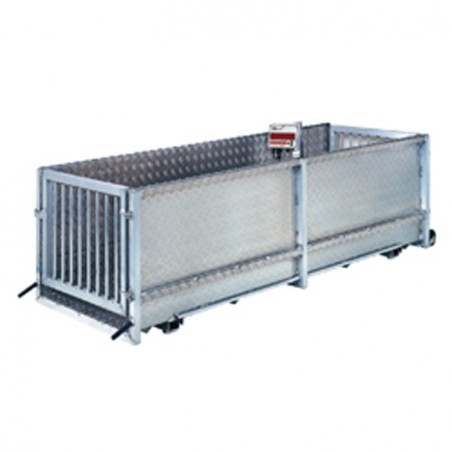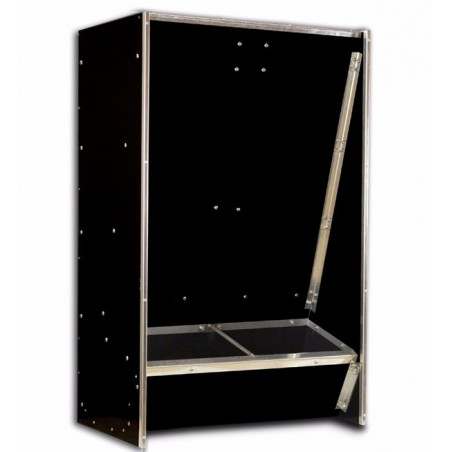Deoxynivalenol (DON), also known as vomitoxin, is produced by fungi of the Fusarium genus and is one of the key contaminants of cereal grains. The most obvious effect in pigs is reduced feed intake, which may be attributed to irritation of stomach mucosa and changes in brain transmitters. Pelleting and particularly conditioning could detoxify DON-contaminated feedstuffs. Four experiments were conducted to ascertain the effects of hydrothermal treatment and sodium metabisulfite (SMB) on deoxynivalenol (DON)-contaminated corn dried distiller grains with solubles (DDGS). Experiment 1 evaluated SMB and heat (autoclaving) on high-DON DDGS (20.6 mg/kg). Six levels of SMB were tested: 0.0% (control), 0.5%, 1%, 2.5%, 5%, and 5% with 100 mL/kg distilled water. Autoclaving after 1 h at 121 °C alone elicited a 9.8% reduction in DON, whereas an 82% reduction was achieved when 5% SMB was added before autoclaving. Experiment 2 tested pelleting high-DON DDGS with SMB. Four batches of DDGS (20.5 mg/kg DON) were tested: 0 (control), 1.0, 2.5, and 5.0% SMB. Pelleted samples were collected at conditioning temperatures of 66 and 82 °C and retention times of 30 and 60 s within temperature. Pelleting conditions had no effect on DON levels, but as SMB inclusion increased in pelleted DDGS, DON levels were reduced. Experiments 3 and 4 evaluated pelleting and SMB on nursery pig growth. Both trials were arranged in a 2×3 + 1 factorial with 5 replicate pens per treatment. In Exp. 3, 987 pigs (13.0 ± 0.2 kg) were used with main effects of (1) diet form: meal or pellet and (2) SMB level: Negative Control (NC), NC + 0.25% SMB, or NC + 0.50% SMB. Negative Control diets were formulated to contain 3 mg/kg DON. Treatment 7 was a Positive Control (PC; <0.5 mg/kg DON) fed in meal form. Pigs fed high-DON diets had reduced ADG and ADFI, but pelleting improved ADG and G:F. Adding SMB lineally increased ADG and tended to increase ADFI. In Exp. 4, 1180 pigs (11.1 ± 0.32 kg) were used with main effects of (1) diet form: meal or pellet and (2) DDGS source: PC (<0.5 mg/kg DON), NC (5 mg/kg DON), or NC + DDGS pelleted and crumbled before mixing into the final diet. In meal form, treatment 7 included 2.5% SMB prior to pelleting DDGS (final diet contained 0.77% SMB).
Overall, a 2-way interaction was observed within NC diets where pelleting the final diet improved G:F by a greater margin in high-DON diets than when the DDGS was pelleted, crumbled, and re-pelleted. DON reduced ADG and ADFI, and pelleting the diet improved ADG and G:F. Including SMB prior to pelleting DON-contaminated DDGS increased ADG and ADFI. Using SMB combined with thermal processing can mitigate DON effects in diets for nursery pigs.

Frobose, H. L., Fruge, E. D., Tokach, M. D., Hansen, E. L., DeRouchey, J. M., Dritz, S. S., Goodband, R.D., and Nelssen, J. L. (2015). The influence of pelleting and supplementing sodium metabisulfite (Na2S2O5) on nursery pigs fed diets contaminated with deoxynivalenol. Animal Feed Science and Technology, 210, 152-164. http://doi.org/10.1016/j.anifeedsci.2015.09.020






